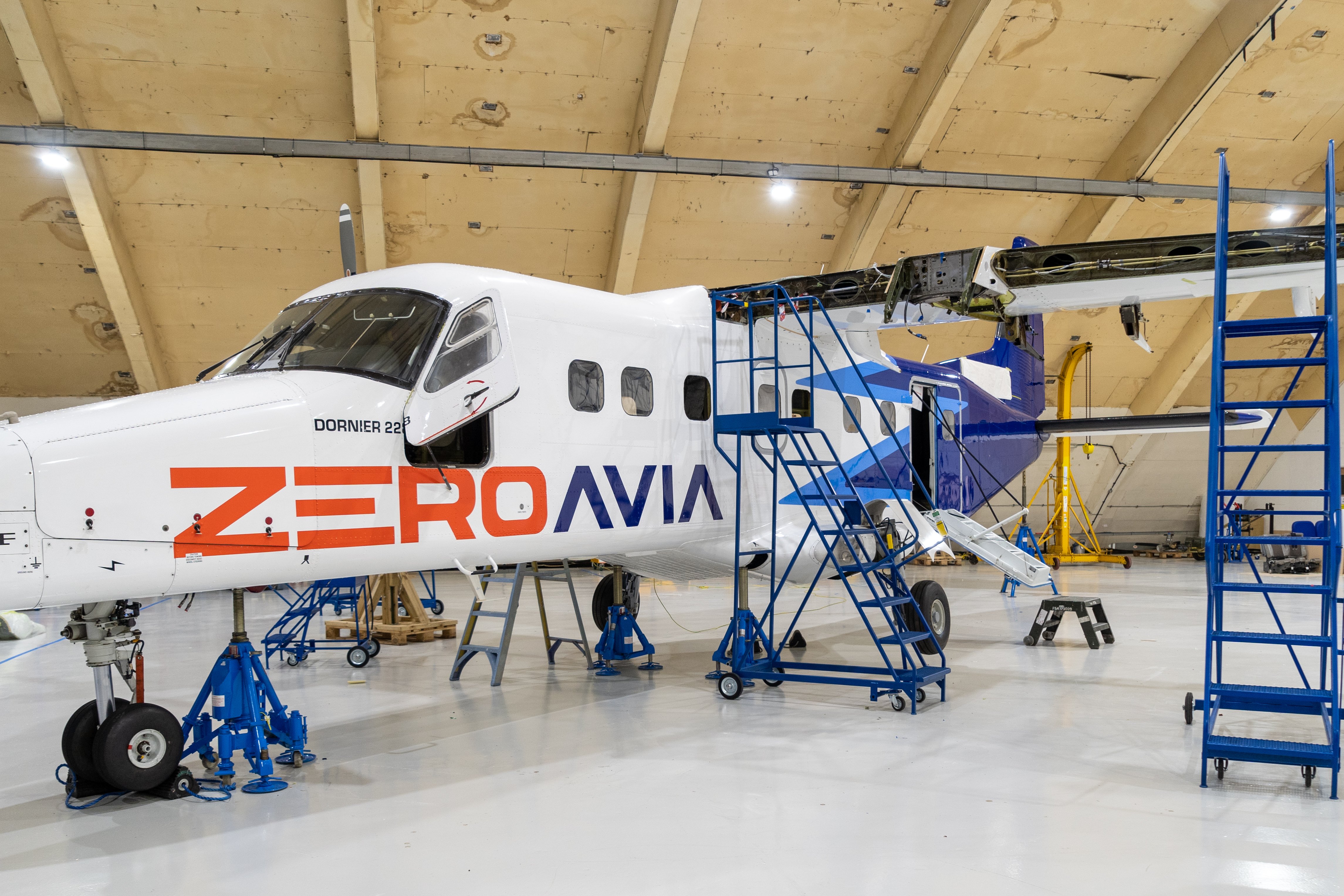Click Here to View This Page on Production Frontend
Click Here to Export Node Content
Click Here to View Printer-Friendly Version (Raw Backend)
Note: front-end display has links to styled print versions.
Content Node ID: 419268
Mitsubishi is teaming with ZeroAvia to convert regional airliners, including the CRJ, to hydrogen propulsion. The Japanese group’s maintenance, repair, and overhaul subsidiary, MHI RJ Aviation Group (MHIRJ), will seek a supplemental type certificate (STC) to replace the GE Aviation CF-34 turbofans on the 50- to 100-seat twinjets with the hydrogen-electric powertrain that ZeroAvia is developing for multiple applications.
One day after ZeroAvia announced the partnership, the Alaska Air Group said it will support efforts to convert up to 50 of its 76-seat Dash 8 Q400 twin-turboprops to hydrogen. The U.S. airline is also investing in the California-based start-up.
In June 2020, Montreal-based MHIRJ acquired the CRJ program from Bombardier after the Canadian aircraft manufacturer decided to exit the commercial airliner sector and focus on making business jets. The CRJ family was launched in 1991 with the 50-seat CRJ100s and 200s, and subsequently, the larger CRJ700, 900, and 1000 models were added.
Meanwhile, ZeroAvia is working on plans to convert Part 23-certified, 19-seat aircraft to hydrogen, starting with the Dornier 228 twin-turboprop. The California-based start-up aims to secure an STC for this program by 2024 and says that MHIRJ will be involved in some aspects of the engineering work.
The company aims to start flight testing a converted Do-228 airframe later this year as part of its HyFlyer II program, which has benefited from UK government financial support. During flight testing last year, a Piper M Series technology demonstrator aircraft crashed near Cranfield Airport in the UK, and the cause of this accident is still being assessed by the country’s Air Accident Investigation Branch.
For the 19-seater conversion, ZeroAvia is developing a 600kW hydrogen fuel cell powertrain. Larger aircraft, like the CRJs, would require more powerful ZA2000 units rated between 2 and 5MW. Certification will be conducted under FAA’s Part 33 rules.
According to ZeroAvia founder and CEO Val Miftakhov, the company plans to develop a network of conversion facilities, some of which it will run itself and some that will be operated by third-party service providers. MHIRJ is the first of these service providers, and it expects to have the STC for the CRJ jets in place by 2027. In some cases, aircraft operators will purchase conversion kits from ZeroAvia and do the retrofits themselves.
ZeroAvia has not published a price for the hydrogen conversions but said it believes it will be similar to the cost of installing a jet engine. “We expect our fuel cell powertrain to reduce per-flight operation and maintenance costs by 40 percent,” said Miftakhov. "We believe that using existing airframe designs is a faster path to commercial zero-emission flight compared to building new planes altogether.”
In addition to the CRJs, ZeroAvia aims to offer the hydrogen conversion for other Part-25 certified aircraft such as the ATR and Dash 8 regional airliner families by 2026. In this sector, it is competing with Universal Hydrogen, which is working on its own STC to retrofit the twin-turboprop models with a kit that stores liquid hydrogen in refillable capsules that get delivered directly to the aircraft.
In its October 26 announcement, Alaska Air effectively became the launch customer for the Dash 8 conversion package, which it expects to support flights of more than 575 miles. According to Diana Birkett Rakow, the airline's head of public affairs and sustainability, the investment in ZeroAvia is part of its five-part plan to achieve net-zero operations by 2040.
The carrier's engineering team will now support ZeroAvia's efforts to scale the ZA2000 powertrain to various aircraft types. Its Dash 8 Q400 aircraft will require a 3MW power rating, and ZeroAvia intends to establish a facility in the Seattle area to support this collaboration.
“We believe that in the future almost every aircraft in the world will be powered by hydrogen-electric engines, simply because it is the most viable and scalable method for eliminating carbon and also to cut the other harmful emissions from the aviation sector,” Miftakhov commented. “The collaboration with MHIRJ is a significant milestone for us and the aviation sector as a whole. We are honored to work with MHIRJ to introduce hydrogen-electric propulsion technology into the regional jet segment and demonstrate the myriad of cost and emissions benefits airlines can derive from hydrogen-fueled flight.”
A focus on marketing zero-carbon versions of the CRJ airliners appears to mark a change in strategy for Mitsubishi Heavy Industries, which in October 2020 suspended the development of its long-planned 88-seat SpaceJet M90 aircraft. The Japanese group has not officially canceled the program but apparently was forced to stop work after investing hundreds of millions of dollars on the aircraft, which had attracted launch orders from All Nippon Airways.
“Developing aviation solutions for the future requires a reassessment of their environmental impact and developing new technologies to ensure that aviation lives up to the commitments required to meet carbon reduction targets,” said MHIRJ president and CEO Hiro Yamamoto. “Regional aircraft are key to keeping smaller communities and regions connected and are also more able to exploit the new technologies on the horizon than larger aircraft and, therefore this is a logical place for this development to begin, and we are proud to be a part of this innovative solution.”
